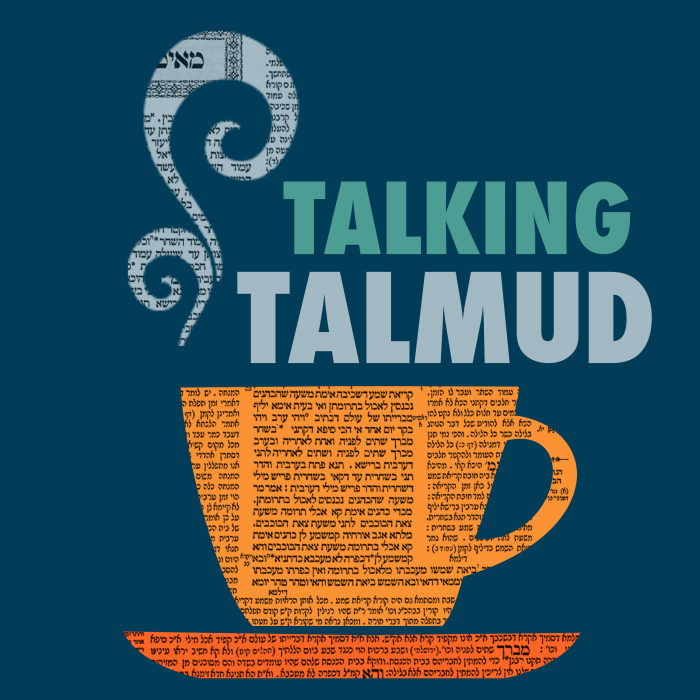Sanhedrin 73
מַתְנִי׳ וְאֵלּוּ הֵן שֶׁמַּצִּילִין אוֹתָן בְּנַפְשָׁן: הָרוֹדֵף אַחַר חֲבֵירוֹ לְהׇרְגוֹ, וְאַחַר הַזָּכָר, וְאַחַר הַנַּעֲרָה הַמְאוֹרָסָה. אֲבָל הָרוֹדֵף אַחַר בְּהֵמָה, וְהַמְחַלֵּל אֶת הַשַּׁבָּת, וְעוֹבֵד עֲבוֹדָה זָרָה – אֵין מַצִּילִין אוֹתָן בְּנַפְשָׁן.
MISHNA: And these are the ones who are saved from transgressing even at the cost of their lives; that is to say, these people may be killed so that they do not perform a transgression: One who pursues another to kill him, or pursues a male to sodomize him, or pursues a betrothed young woman to rape her. But with regard to one who pursues an animal to sodomize it, or one who seeks to desecrate Shabbat, or one who is going to engage in idol worship, they are not saved at the cost of their lives. Rather, they are forewarned not to transgress, and if they proceed to transgress after having been forewarned, they are brought to trial, and if they are found guilty, they are executed.
גְּמָ׳ תָּנוּ רַבָּנַן: מִנַּיִין לְרוֹדֵף אַחַר חֲבֵירוֹ לְהׇרְגוֹ שֶׁנִּיתָּן לְהַצִּילוֹ בְּנַפְשׁוֹ? תַּלְמוּד לוֹמַר: ״לֹא תַעֲמֹד עַל דַּם רֵעֶךָ״. וְהָא לְהָכִי הוּא דַּאֲתָא? הַאי מִיבְּעֵי לֵיהּ לְכִדְתַנְיָא: מִנַּיִין לָרוֹאֶה אֶת חֲבֵירוֹ שֶׁהוּא טוֹבֵעַ בַּנָּהָר, אוֹ חַיָּה גּוֹרַרְתּוֹ, אוֹ לִסְטִין בָּאִין עָלָיו, שֶׁהוּא חַיָּיב לְהַצִּילוֹ? תַּלְמוּד לוֹמַר: ״לֹא תַעֲמֹד עַל דַּם רֵעֶךָ״. אִין, הָכִי נָמֵי.
GEMARA: The Sages taught in a baraita: From where is it derived that with regard to one who pursues another in order to kill him, the pursued party may be saved at the cost of the pursuer’s life? The verse states: “You shall not stand idly by the blood of another” (Leviticus 19:16); rather, you must save him from death. The Gemara asks: But does this verse really come to teach us this? This verse is required for that which is taught in a baraita: From where is it derived that one who sees another drowning in a river, or being dragged away by a wild animal, or being attacked by bandits [listin], is obligated to save him? The Torah states: “You shall not stand idly by the blood of another.” The Gemara answers: Yes, it is indeed so that this verse relates to the obligation to save one whose life is in danger.
וְאֶלָּא, נִיתָּן לְהַצִּילוֹ בְּנַפְשׁוֹ מְנָלַן? אָתְיָא בְּקַל וָחוֹמֶר מִנַּעֲרָה הַמְאוֹרָסָה: מָה נַעֲרָה הַמְאוֹרָסָה שֶׁלֹּא בָּא אֶלָּא לְפוֹגְמָהּ, אָמְרָה תּוֹרָה נִיתָּן לְהַצִּילָהּ בְּנַפְשׁוֹ, רוֹדֵף אַחַר חֲבֵירוֹ לְהׇרְגוֹ – עַל אַחַת כַּמָּה וְכַמָּה.
The Gemara asks again: But from where do we derive that one may be saved at the cost of the pursuer’s life? The Gemara answers: It is derived by means of an a fortiori inference from the halakha governing a betrothed young woman who was assaulted by a rapist: If in the case of a betrothed young woman, whom the rapist comes only to degrade, i.e., the result of the rape will be that her status is lowered, the Torah said that she may be saved even at the cost of the rapist’s life, then in the case of one who pursues another person to kill him, all the more so should one say that he may be saved even at the cost of the pursuer’s life.
וְכִי עוֹנְשִׁין מִן הַדִּין? דְּבֵי רַבִּי תָּנָא, הֶקֵּישָׁא הוּא: ״כִּי כַּאֲשֶׁר יָקוּם אִישׁ עַל רֵעֵהוּ וּרְצָחוֹ נֶפֶשׁ״. וְכִי מָה לָמַדְנוּ מֵרוֹצֵחַ?
The Gemara asks: But does the court administer punishment based on an a fortiori inference? The Gemara answers: A Sage of the school of Rabbi Yehuda HaNasi taught: This halakha is also derived from an analogy based on a juxtaposition. How so? With regard to the rape of a betrothed young woman it is written: “But you shall do nothing to the young woman; the young woman has committed no sin worthy of death; for as when a man rises against his neighbor, and slays him, so too with this matter” (Deuteronomy 22:26). But why would the verse mention murder in this context? But what do we learn here from a murderer?
מֵעַתָּה הֲרֵי זֶה בָּא לְלַמֵּד וְנִמְצָא לָמֵד. מַקִּישׁ רוֹצֵחַ לְנַעֲרָה הַמְאוֹרָסָה: מָה נַעֲרָה הַמְאוֹרָסָה נִיתָּן לְהַצִּילָהּ בְּנַפְשׁוֹ, אַף רוֹצֵחַ נִיתָּן לְהַצִּילוֹ בְּנַפְשׁוֹ.
Now, the mention of murder came in order to teach a halakha about the betrothed young woman, and it turns out that, in addition, it derives a halakha from that case. The Torah juxtaposes the case of a murderer to the case of a betrothed young woman to indicate that just as in the case of a betrothed young woman one may save her at the cost of the rapist’s life, so too, in the case of a murderer, one may save the potential victim at the cost of the murderer’s life.
וְנַעֲרָה מְאוֹרָסָה גּוּפַהּ מְנָלַן? כִּדְתָנָא דְּבֵי רַבִּי יִשְׁמָעֵאל, דְּתָנָא דְּבֵי רַבִּי יִשְׁמָעֵאל: ״וְאֵין מוֹשִׁיעַ לָהּ״ – הָא יֵשׁ מוֹשִׁיעַ לָהּ, בְּכׇל דָּבָר שֶׁיָּכוֹל לְהוֹשִׁיעַ.
The Gemara asks: And with regard to the betrothed young woman herself, from where do we derive that she may be saved at the cost of the rapist’s life? The Gemara explains: As it was taught in the school of Rabbi Yishmael: The verse states: “For he found her in the field, and the betrothed young woman cried out, and there was none to save her” (Deuteronomy 22:27). But if there was someone to save her, he must do so by any means that can save her, even by killing the potential rapist.
גּוּפָא: מִנַּיִן לָרוֹאֶה אֶת חֲבֵרוֹ שֶׁהוּא טוֹבֵעַ בַּנָּהָר, אוֹ חַיָּה גּוֹרַרְתּוֹ, אוֹ לִסְטִין בָּאִין עָלָיו, שֶׁהוּא חַיָּיב לְהַצִּילוֹ? תַּלְמוּד לוֹמַר: ״לֹא תַעֲמֹד עַל דַּם רֵעֶךָ״. וְהָא מֵהָכָא נָפְקָא? מֵהָתָם נָפְקָא! אֲבֵדַת גּוּפוֹ מִנַּיִין? תַּלְמוּד לוֹמַר: ״וַהֲשֵׁבֹתוֹ לוֹ״.
Concerning the matter itself, it is taught in a baraita: From where is it derived that one who sees another drowning in a river, or being dragged away by a wild animal, or being attacked by bandits, is obligated to save him? The verse states: “You shall not stand idly by the blood of another” (Leviticus 19:16). The Gemara asks about this derivation: But is this really derived from here? It is derived from there, i.e., from a different verse, as it is taught: The Torah teaches that one must return lost property to its rightful owner. But from where is it derived that one must help his neighbor who may suffer the loss of his body or his health? The verse states: “And you shall restore it [vahashevato] to him [lo]” (Deuteronomy 22:2), which can also be read as: And you shall restore him [vehashevato] to him, i.e., saving his body. Consequently, there should be no need for the additional verse: “You shall not stand idly by the blood of another.”
אִי מֵהָתָם, הֲוָה אָמֵינָא: הָנֵי מִילֵּי בְּנַפְשֵׁיהּ, אֲבָל מִיטְרַח וּמֵיגַר אָגוֹרֵי – אֵימָא לָא. קָא מַשְׁמַע לַן.
The Gemara answers: If this halakha were derived only from there, I would say that this matter applies only to saving the person in danger by himself, i.e., that he himself must come to his neighbor’s rescue if he can, as is the halakha with regard to returning a lost item. But to trouble himself and hire workers for this purpose, one might say that he is not obligated, just as he is not obligated to hire workers to recover another’s lost item. Therefore, the verse “Do not stand by the blood of another” teaches us that he must even hire workers, and he transgresses a prohibition if he does not do so.
תָּנוּ רַבָּנַן: אֶחָד הָרוֹדֵף אַחַר חֲבֵירוֹ לְהׇרְגוֹ, וְאַחַר הַזָּכָר, וְאַחַר נַעֲרָה הַמְאוֹרָסָה, וְאַחַר חַיָּיבֵי מִיתוֹת בֵּית דִּין, וְאַחַר חַיָּיבֵי כָרֵיתוֹת – מַצִּילִין אוֹתָן בְּנַפְשׁוֹ. אַלְמָנָה לְכֹהֵן גָּדוֹל, גְּרוּשָׁה וַחֲלוּצָה לְכֹהֵן הֶדְיוֹט – אֵין מַצִּילִין אוֹתָן בְּנַפְשׁוֹ.
§ The Sages taught yet another baraita on the topic of a pursuer: One who pursues another to kill him; or pursues a male to sodomize him; or pursues a betrothed young woman to rape her; or pursues a woman who is forbidden to him by a prohibition, the violation of which renders him liable to receive a court-imposed death penalty; or pursues a woman who is forbidden to him by a prohibition, the violation of which renders him liable to receive karet, all these people are to be saved at the cost of the life of the transgressor. But with regard to a widow who is being pursued by a High Priest, or a divorcée, or a woman who has performed ḥalitza [ḥalutza] who is being pursued by an ordinary priest, they are not saved at the cost of the rapist’s life, because these unions are subject only to a mere prohibition.
נֶעֶבְדָה בָּהּ עֲבֵירָה – אֵין מַצִּילִין אוֹתָהּ בְּנַפְשׁוֹ. יֵשׁ לָהּ מוֹשִׁיעַ – אֵין מַצִּילִין אוֹתָהּ בְּנַפְשׁוֹ. רַבִּי יְהוּדָה אוֹמֵר: אַף הָאוֹמֶרֶת ״הַנִּיחוּ לוֹ״ שֶׁלֹּא יַהַרְגֶנָּה.
Furthermore, if a sin had already been committed with the betrothed young woman, she is not saved at the cost of the rapist’s life. In addition, if there is one to save her, i.e., if there is another way to save the betrothed young woman that does not involve killing the rapist, she is not saved at the cost of his life. Rabbi Yehuda says: Also, if the betrothed young woman says to those who come to rescue her: Let the rapist be, she is saying this so that he should not kill her, and therefore the rapist is not killed.
מְנָא הָנֵי מִילֵּי? אָמַר קְרָא: ״וְלַנַּעֲרָה לֹא תַעֲשֶׂה דָבָר אֵין לַנַּעֲרָה חֵטְא מָוֶת״. ״נַעַר״ – זֶה זְכוּר, ״נַעֲרָה״ – זוֹ נַעֲרָה הַמְאוֹרָסָה, ״חֵטְא״ – אֵלּוּ חַיָּיבֵי כָרֵיתוֹת, ״מָוֶת״ – אֵלּוּ חַיָּיבֵי מִיתוֹת בֵּית דִּין.
The Gemara asks: From where are these matters derived? The Gemara answers: The verse states: “But you shall do nothing to the young woman [na’ara]; the young woman has committed no sin worthy of death” (Deuteronomy 22:26). The word is read as young woman, “na’ara,” but it is written as young man, na’ar. Na’ar, as it is written, this is an allusion to sodomy. “Na’ara,” as it is read, this is a betrothed young woman. “Sin”; these are women who are forbidden to him by a prohibition the violation of which renders him liable to receive karet. “Death”; these are women who are forbidden to him by a prohibition the violation of which renders him liable to receive a court-imposed death penalty.
כֹּל הָנֵי לְמָה לִי? צְרִיכִי, דְּאִי כְּתַב רַחֲמָנָא ״נַעַר״ – מִשּׁוּם דְּלָאו אוֹרְחֵיהּ, אֲבָל נַעֲרָה דְּאוֹרְחַהּ – אֵימָא לָא.
The Gemara asks: Why do I need all these different cases? Why does it not suffice to offer one example from which all the others can be derived? The Gemara answers: These cases are all necessary, as had the Merciful One written only na’ar to teach the halakha with regard to sodomy, one might say that this victim alone is saved at the cost of his attacker’s life, because it is not his way to engage in intercourse with a man, and so he would suffer excessive embarrassment and pain were he not saved. But a young woman, whose natural way is to engage in intercourse with a man, one might say that her attacker may not be killed.
וְאִי כְּתַב רַחֲמָנָא ״נַעֲרָה״, מִשּׁוּם דְּקָא פָגֵים לַהּ, אֲבָל נַעַר דְּלָא קָא פָגֵים לֵיהּ – אֵימָא לָא.
And had the Merciful One written only “na’ara” to teach the halakha concerning a betrothed young woman, one might say that she alone is saved at the cost of her attacker’s life, because he degrades her by taking her virginity, and she will be cheapened in the eyes of her betrothed. But a young man, who is not similarly degraded, one might say that his attacker may not be killed.
וְאִי כְּתַב רַחֲמָנָא הָנֵי,
And had the Merciful One written both of these,
מִשּׁוּם דְּהַאי לָאו אוֹרְחֵיהּ הוּא, וְהָא קָא פָגֵים לַהּ. אֲבָל שְׁאָר עֲרָיוֹת דְּאוֹרְחַיְיהוּ, וְלָא נְפִישׁ פִּיגְמַיְיהוּ, אֵימָא לָא. כְּתַב רַחֲמָנָא ״חֵטְא״.
one might say that these two alone are saved at the cost of their respective attackers’ lives, because for this one it is not his natural way, and that one he degrades. But one who rapes one of the other women with whom relations are forbidden, whose natural way is to engage in intercourse with a man, and their degradation is not great, one might say that their attackers may not be killed. Therefore, the Merciful One wrote “sin” to include in this halakha the other women with whom relations are forbidden.
וְאִי כְּתַב רַחֲמָנָא ״חֵטְא״, הֲוָה אָמֵינָא אֲפִילּוּ חַיָּיבֵי לָאוִין. כְּתַב רַחֲמָנָא ״מָוֶת״.
And had the Merciful One wrote only “sin,” I would say that this applies even to women who are forbidden only by a mere prohibition, that they too are to be saved even at the cost of their attackers’ lives. Therefore, the Merciful One wrote “death,” to teach us that this halakha applies only to transgressions that are punishable by the death penalty.
וְאִי כְּתַב רַחֲמָנָא ״מָוֶת״, הֲוָה אָמֵינָא: חַיָּיבֵי מִיתוֹת בֵּית דִּין – אֵין, חַיָּיבֵי כָרֵיתוֹת – לָא. כְּתַב רַחֲמָנָא ״חֵטְא״.
And had the Merciful One wrote only “death,” I would say that those women who are forbidden to him by a prohibition the violation of which renders him liable to a court-imposed death penalty are indeed to be saved even at the cost of their attackers’ lives, as these are very serious sins, for which they are punished by the court. But those women who are forbidden to him by the type of prohibition the violation of which renders him liable to receive karet, a punishment from God, are not to be saved at the cost of their attackers’ lives. Therefore, the Merciful One wrote “sin,” to teach that this halakha applies even to prohibitions that are punishable by karet.
וְלִכְתּוֹב רַחֲמָנָא ״חֵטְא מָוֶת״, וְלָא בָּעֵי ״נַעַר״ וְ״נַעֲרָה״? אִין, הָכִי נָמֵי. וְאֶלָּא ״נַעַר״ ״נַעֲרָה״? חַד לְמַעוֹטֵי עוֹבֵד עֲבוֹדָה זָרָה, וְחַד לְמַעוֹטֵי בְּהֵמָה וְשַׁבָּת.
The Gemara challenges: But let the Merciful One write only “sin worthy of death” and it would no longer be necessary to specify na’ar and “na’ara.” The Gemara explains: Yes, this is indeed so; the words “sin worthy of death” suffice to include all those who are included in this halakha. But na’ar and “na’ara” are mentioned here not to include a case, but rather to exclude a case. One serves to exclude someone who seeks to worship idols, and one serves to exclude someone who seeks to sodomize an animal or desecrate Shabbat, teaching that these transgressors are not killed in order to prevent them from transgressing.
וּלְרַבִּי שִׁמְעוֹן בֶּן יוֹחַי, דְּאָמַר: עוֹבֵד עֲבוֹדָה זָרָה נִיתָּן לְהַצִּילוֹ בְּנַפְשׁוֹ, לְמָה לִי? חַד לְמַעוֹטֵי בְּהֵמָה, וְחַד לְמַעוֹטֵי שַׁבָּת.
The Gemara asks: And according to the opinion of Rabbi Shimon ben Yoḥai, who says that an idol worshipper must be saved from transgressing even at the cost of his life, why do I need the two terms na’ar and “na’ara”? The Gemara answers: One serves to exclude someone who seeks to sodomize an animal, and one serves to exclude someone who seeks to desecrate Shabbat.
סָלְקָא דַּעְתָּךְ אָמֵינָא: תֵּיתֵי שַׁבָּת מֵ״חִילּוּל״ ״חִילּוּל״ מֵעֲבוֹדָה זָרָה.
The Gemara explains why both are needed: It might enter your mind to say that the halakha with regard to one who desecrates Shabbat can be derived from the halakha with regard to idol worship by way of a verbal analogy between the word “desecration” mentioned in connection with Shabbat and the word “desecration” mentioned in connection with idol worship. Consequently, you might think that one who seeks to desecrate Shabbat must also be saved from transgressing even at the cost of his life. Therefore, a special derivation was necessary to teach that a potential Shabbat desecrator is not to be saved at the cost of his life.
וּלְרַבִּי אֶלְעָזָר בְּרַבִּי שִׁמְעוֹן, דְּאָמַר: מְחַלֵּל אֶת הַשַּׁבָּת נִיתָּן לְהַצִּילוֹ בְּנַפְשׁוֹ, דְּאָתְיָא שַׁבָּת מֵ״חִילּוּל״ ״חִילּוּל״ מֵעֲבוֹדָה זָרָה, מַאי אִיכָּא לְמֵימַר? חַד מִיעוּט לְמַעוֹטֵי בְּהֵמָה, וְאִידַּךְ – אַיְּידֵי דִּכְתַב רַחֲמָנָא ״נַעַר״, כְּתַב נָמֵי ״נַעֲרָה״.
The Gemara asks: And according to the opinion of Rabbi Elazar, son of Rabbi Shimon, who says that one who comes to desecrate Shabbat must be saved from transgressing even at the cost of his life, because the halakha with regard to one who desecrates Shabbat can be derived from the halakha with regard to idol worship by way of a verbal analogy between the word “desecration” mentioned in connection with Shabbat and the word “desecration” mentioned in connection with idol worship, what is there to say? The Gemara answers: One exclusion serves to exclude someone who seeks to sodomize an animal; and as for the other, since the Merciful One wrote na’ar, He also wrote “na’ara.” That is to say, the form in which the word is written in this verse and the form in which it is read do not teach two separate halakhot.
רַבִּי יְהוּדָה אוֹמֵר: אַף הָאוֹמֶרֶת ״הַנִּיחוּ לוֹ״ שֶׁלֹּא יַהַרְגֶנָּה. בְּמַאי קָמִיפַּלְגִי?
§ The baraita cited previously teaches: Rabbi Yehuda disagrees with the Rabbis and says: Also, if the betrothed young woman says to those who come to rescue her: Let the rapist be, she is saying this so that he should not kill her, and therefore the rapist is not killed. The Gemara asks: With regard to what do they disagree?
אָמַר רָבָא: בְּמַקְפֶּדֶת עַל פִּיגְמָהּ, וּמַנִּיחָתוֹ שֶׁלֹּא יַהַרְגֶנָּה. רַבָּנַן סָבְרִי: אַפִּיגְמָא קָפֵיד רַחֲמָנָא, וַהֲרֵי מַקְפֶּדֶת עַל פִּיגְמָהּ. וְרַבִּי יְהוּדָה: הַאי דְּקָאָמַר רַחֲמָנָא קַטְלֵיהּ – מִשּׁוּם דְּמָסְרָה נַפְשַׁהּ לִקְטָלָא. הָא לָא מָסְרָה נַפְשַׁהּ לִקְטָלָא.
Rava says: They disagree about the case where the young woman is particular about the degradation that she is to suffer as a result of the rape, but nevertheless she allows him to rape her so that he should not kill her. The Rabbis maintain that the Torah is particular about her degradation, which is why the rapist may be killed, and she too is particular about her degradation. And Rabbi Yehuda maintains that the Merciful One says that a rapist must be killed because his victim is prepared to sacrifice her life rather than yield to rape. The woman in this case, however, who asks that the rapist not be harmed, is not prepared to sacrifice her life, and therefore her rapist may not be killed.
אֲמַר לֵיהּ רַב פָּפָּא לְאַבָּיֵי: אַלְמָנָה לְכֹהֵן גָּדוֹל נָמֵי קָא פָגֵים לַהּ! אֲמַר לֵיהּ: אַפִּיגְמָא רַבָּה קָפֵיד רַחֲמָנָא, אַפִּיגְמָא זוּטָא לָא קָפֵיד רַחֲמָנָא.
Rav Pappa said to Abaye: If the reason that the rapist may be killed is the woman’s degradation, as claimed by the Rabbis, a High Priest also degrades a widow when he engages in intercourse with her, as he makes her a ḥalala, a woman who is disqualified from marrying a priest. Why then is she not saved even at the cost of her attacker’s life? Abaye said to Rav Pappa: For a great level of degradation, involving karet and potentially a child that is a mamzer, the Merciful One is particular; but for a small level of degradation, as in the case of a ḥalala, the Merciful One is not particular.
״חֵטְא״ – אֵלּוּ חַיָּיבֵי כָרֵיתוֹת. וּרְמִינְהוּ: וְאֵלּוּ נְעָרוֹת שֶׁיֵּשׁ לָהֶן קְנָס – הַבָּא עַל אֲחוֹתוֹ.
§ The baraita taught that the word “sin” is referring to women who are forbidden to a man by a prohibition the violation of which renders him liable to receive karet. From here it is derived that a man who attempts to rape a woman who is forbidden to him under penalty of karet may be killed. The Gemara raises a contradiction between this and what is taught in a mishna (Ketubot 29a): These are the cases of young women for whom there is a fine paid to their fathers by one who rapes them, and the list includes: One who engages in intercourse with his sister. One who engages in intercourse with his sister is punished with karet, and accordingly, a woman being raped by her brother may be saved even at the cost of her brother’s life. Whenever one is liable to be killed at the hands of people, even if the transgressor is not killed, the transgressor is exempt from paying any fine or payment. Therefore, since one attempting to rape his sister may be killed, he should be exempt from the fine ordinarily imposed upon a rapist.
אַמְרוּהָ רַבָּנַן קַמֵּיהּ דְּרַב חִסְדָּא: מִשְּׁעַת הַעֲרָאָה דְּפַגְמַהּ, אִיפְּטַר לֵהּ מִקְּטָלָא. מָמוֹנָא לָא מְשַׁלֵּם עַד גְּמַר בִּיאָה.
The Sages stated this solution before Rav Ḥisda: From the time of the initial stage of intercourse, when he has already degraded her, as she is considered to have engaged in intercourse from that time, he is already exempt from being killed, as it was taught in a baraita that once the sin has been committed, and the woman has been degraded, the rapist may no longer be killed. But he does not become obligated to pay any money until the conclusion of the act of intercourse, when the signs of her virginity are completely taken away. Since the two types of liability are not incurred simultaneously, there is no exemption from paying the fine.
הָנִיחָא לְמַאן דְּאָמַר: הַעֲרָאָה זוֹ נְשִׁיקָה, אֶלָּא לְמַאן דְּאָמַר: הַעֲרָאָה זוֹ הַכְנָסַת עֲטָרָה – מַאי אִיכָּא לְמֵימַר?
Rav Ḥisda said to those Sages: This works out well according to the one who says that the definition of the initial stage of intercourse is a kiss, i.e., external contact of the sexual organs, as it is inevitable that there will be some slight penetration. But according to the one who said that the definition of the initial stage of intercourse is the insertion of the corona, what is there to say? This stage takes away the woman’s virginity. From the time of the initial stage of intercourse she is no longer a virgin, and he becomes liable to pay the fine at the very moment that he may be killed in order to save him from his transgression.
אֶלָּא אָמַר רַב חִסְדָּא: כְּגוֹן שֶׁבָּא עָלֶיהָ שֶׁלֹּא כְּדַרְכָּהּ, וְחָזַר וּבָא עָלֶיהָ כְּדַרְכָּהּ.
Rather, Rav Ḥisda says: The mishna should be understood as referring to a case where the brother first engaged in intercourse with his sister in an atypical manner, i.e., anal intercourse. With this intercourse he degraded her, but she is still considered a virgin. Afterward, he again engaged in intercourse with her in a typical manner. Only at that point did he become liable to pay the fine paid by one who engaged in intercourse with a virgin and took away her virginity. But he could not then be killed, as she had already been degraded, so there is no exemption from the fine.
רָבָא אָמַר: בְּמַנִּיחָתוֹ, שֶׁלֹּא יַהַרְגֶנָּה, וְרַבִּי יְהוּדָה הִיא.
Rava says: The mishna is referring to a case where the sister allows her brother to rape her and asks that he not be harmed so that he should not kill her, and it is taught in accordance with the opinion of Rabbi Yehuda, who says that in such a case she is not to be saved at the cost of her brother’s life.






















